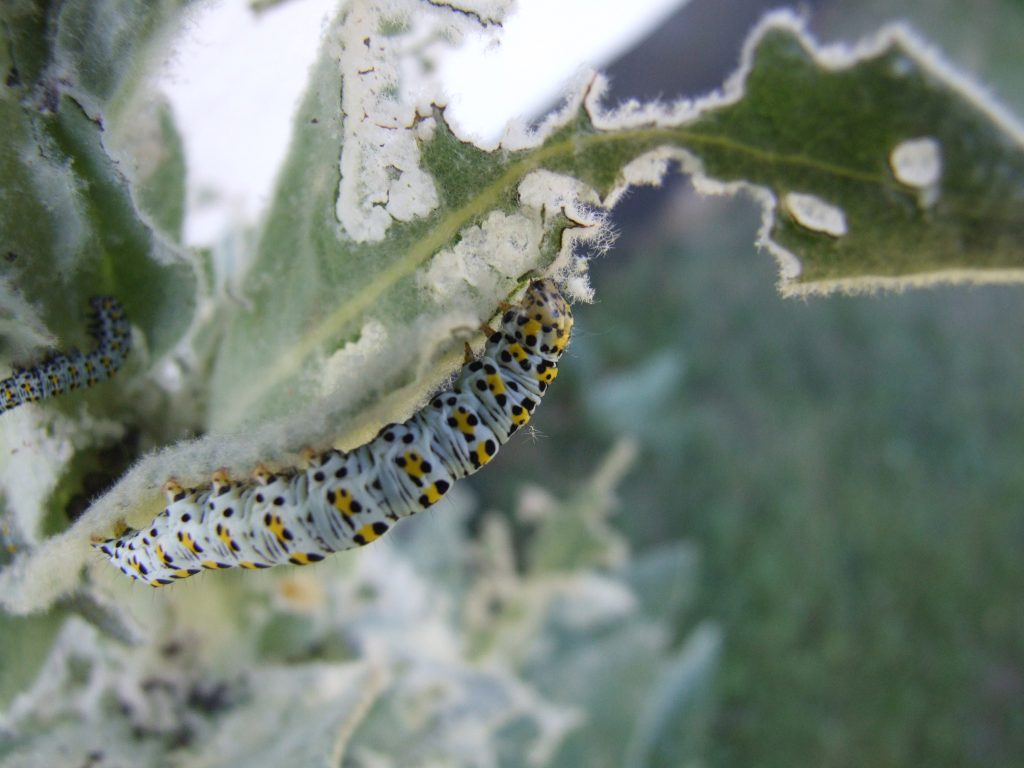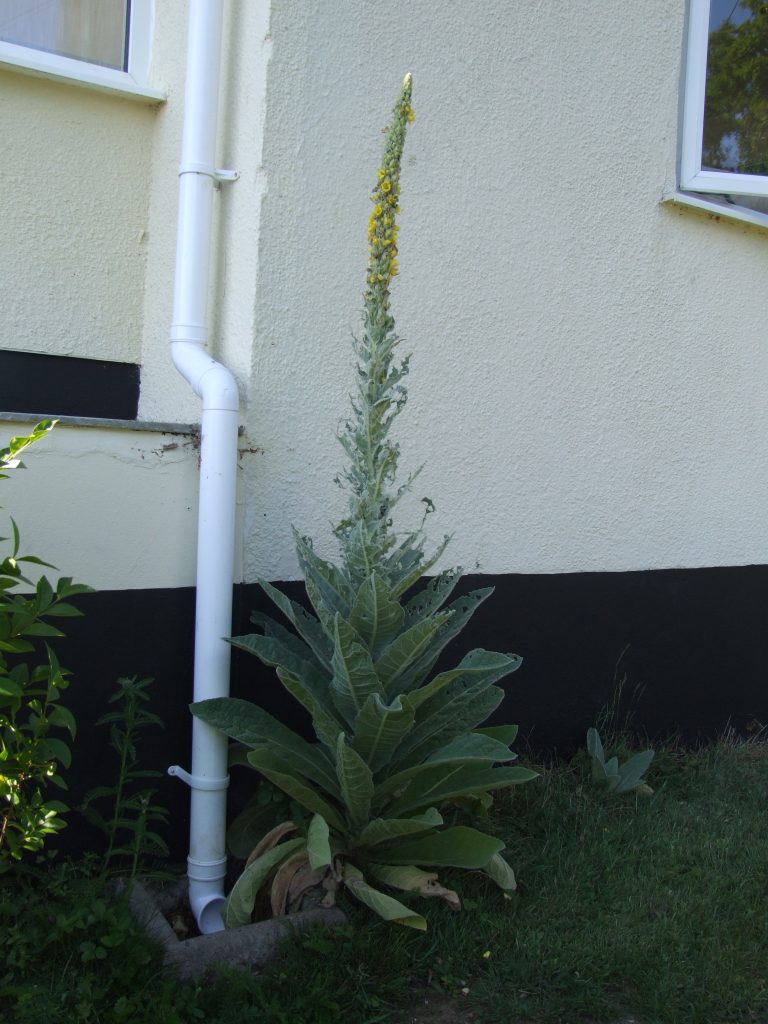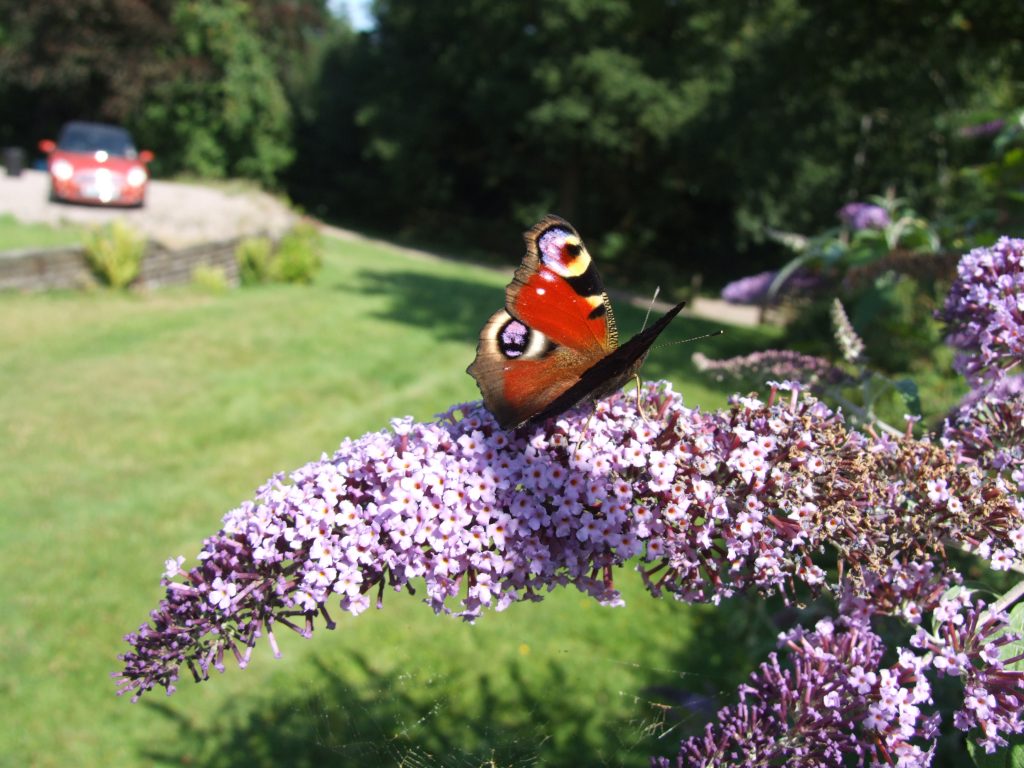I just like the word, actually, but over the years the local caterpillars have given me several opportunities to take pretty pictures and think about their presumably defensive, or maybe just creative, colouration.
This time, I noticed a smart-jacketed caterpillar – and then a veritable plague of them – on a great mullein that has arisen in our garden quite unbidden, and grown to a most impressive five feet of yellow stateliness just by the drain from our conservatory roof.

To get a species of flower, which they sell for several pounds at the garden centre, growing for free is a particular pleasure, especially when you’ve spent a lot of money on lupins only to have them treated as a salad snack by rabbits. Nature gives with one hand what she takes with the other.

Anyway, I noticed today that our botanical freebie is covered in black deposits, and then that it has been half-eaten, and close examination revealed the culprits. They are just as beautiful as the plant, actually, and since the mullein cost me nothing and both are native species, I’m untroubled that its days seem numbered. In any case, they are biennials, and there seems to be another growing nearby, and unmolested, and promising more glory next year.
Naturally I wanted to see what my caterpillars were. Some, I find, only have the Latin genus and species name in my reference book, but they often have descriptive names like “Brindled Ochre,” evocative labels like “Rannock Sprawler,” or names which might give a clue as to their usual food plants, such as “Chamomile Shark,” which presumably feeds on chamomile, or maybe sharks. Or both.
My caterpillars were quite obvious as I leafed through the book, on page 171. To my amusement they turned out to be the Mullein moth, Cucullia verbasci. I think that’s the only time I’ve found caterpillars eating the things they’re actually named after. Yet it does raise the interesting question of how not only the mullein itself, but its eponymous caterpillar, found their way to our patch which is far from any other places they might grow.

It seems that mullein pupae can remain dormant in the soil for up to five years, but whether the moths just flew in by chance to lay their eggs, or emerged yo order by some sophisticated signal generated by the food plant, I have no idea. Whatever the trick is, it works.
In this particular case, it works very much to my advantage, as according to the book these caterpillars, occurring in such large numbers, can strip not only mulleins and figworts, but also the non-native Buddleia, which (as gardeners among you will know), attracts swarms of beautiful butterflies when it comes into flower. Nature has spared mine, just across the lawn from the stricken mullein, at least this year. So the Lepidoptera will be out in force, and I’ll be on the lookout for rarities. Maybe there will be some chamomile shark caterpillars amongst them.


Lovely.